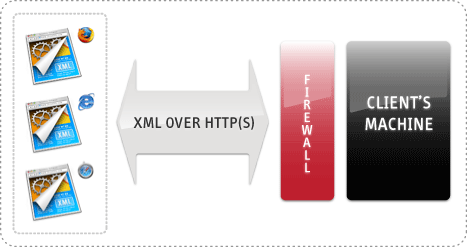

The process of producing a Webcentric application is one of creating, assembling and configuring the constituent components that make up the application. There are two basic approaches: the first is to make use of those Webcentric components which specialize in loading and displaying existing content (html, xml, images, etc). The second is to use custom DHTML components, either those supplied as part of the framework, or purpose built for a particular application or requirement.
A Webcentric application is assembled using 'MetaData' which is the declarative mark-up language used to specify both the structure and behaviour of the application. Developers who are familiar with XML and XHTML will find it intuitive enough to build sophisticated applications, without having advanced JavaScript knowledge.

Communication is standards-driven using XML over HTTP, thus by-passing any firewall restrictions your end user may have. Webcentric runs entirely in the browser which means that new functionality can be added seamlessly without having to install software updates.
All communication with the server operates through the XHR object and the Framework has a sophisticated request manager to handle the request/response cycles. A user calls multiple actions on the screen and the manager queues them up and initiates the request when a resource becomes available. The response from the server is forwarded to the designated handler. The user is left with a seamless experience as the browser never reloads - just the units of data on the screen.